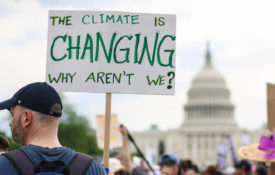Two years ago, in those last few “normal” weeks before the pandemic struck in full force, we published a piece about cause marketing at Super Bowl LIV.
In March 2020, the world’s greatest marketers knew incorporating social impact into their clever ads was a smart move. Two years later, we’ve lived through a pandemic responsible for nearly 1 million deaths in the U.S. alone, major political upheaval, and monumental movements for social justice. Companies’ reactions to these events have become fundamental to their identity and their brand.
How, then, was this shift threaded into the famously entertaining, incredibly expensive, annual commercials of Super Bowl Sunday? Did advertising teams succeed in their attempts to promote social impact? We brushed off our old scorecard to find out.
Scoring Super Bowl LVI Cause Marketing Ads
We rated a number of the ads that engaged in “cause marketing” using the following rubric:
Fit: Does the cause make sense for the brand? Score: _/3
Partnership: Does the brand have a substantiated partnership connected to this effort? Score: _/1
Activation: Does the ad inform and activate viewers? Do people care more about the cause because of the ad? Score: _/3
Long-term: Does the brand have a long-term relationship to the cause? Will this relationship further the cause? Score: _/3
Advancing the Ball, but a Missed Opportunity for Impact x2
Hellmann’s Mayo Tackles Food Waste
The ad: Features Jerod Mayo, former NFL linebacker, tackling individuals (including Pete Davidson) about to throw away food, and suggests ways for them to repurpose those ingredients with recipes involving—you guessed it—mayonnaise!
The activation: This ad is connected to Hellmann’s larger #MakeTasteNotWaste campaign, which is meant to inspire people to waste less food. On the associated website, Hellmann’s reminds us that “approximately 40% of food waste happens in people’s homes,” and invites you to repurpose your leftovers (with lots of helpful recipes) and reduce food waste.
- Social good effort: Food waste
- Score:
- Fit: 3/3
- Partnership: 0/1
- Activation: 1/3
- Long-term: 1/3
- TOTAL: 5/10
Our take: Fighting food waste is critical, and makes sense for a food brand that reaches millions of Americans. But the ad doesn’t go the distance to help viewers really understand 1) the importance of the cause or 2) how to do their part. The main campaign website is primarily focused on a collection of recipes that use Hellmann’s “magical ingredient,” and is light on statistics, resources, and data. With some digging you can find a page that explains more about their efforts, including relevant stats and some minimal information about partnerships. This is a reasonable concept, but if the Hellmann’s team wishes to really lead—and quantify the value of their effort—they have a long way to go. We hope they stick with it; it’s too important an opportunity to waste. (Yeah … we did that.)
Google Pixel: Lizzo in Real Tone
The ad: Set to a moving song by icon Lizzo, we see old photos featuring individuals with darker complexions whose faces are obscured or shaded by poor resolution and lighting. We learn that, historically, camera technology has excluded people of color, especially those with darker skin tones. We are then introduced to “Real Tone” on Google’s Pixel 6 phone—a camera that Google worked hard to create, which more accurately highlights the nuances of diverse skin tones. We see beautiful photos of people with every skin tone enjoying life’s special moments.
The activation: Real Tone, #SeenOnPixel, highlights the historic failure of camera technology, and Google’s commitment to make its camera and image products work more equitably for people of color.
- Social good effort: Racial justice
- Score:
- Fit: 2/3
- Partnership: 0/1
- Activation: 1/3
- Long-term: 3/3
- TOTAL: 6/10
Our take: This is a truly beautiful ad, and the campaign raises awareness and creates meaningful resources for people of color looking for a better camera. That said, beyond the product and the accompanying ad campaign, we were left wondering whether this was tied to a larger effort related to diversity or systemic racism. If Google were building off of this work both internally and in its community-based efforts, that would have been really powerful to understand. If it is not, we feel like this campaign really missed the extra point.
Heartstrings, but …?
Salesforce: The New Frontier
The ad: Matthew McConaughey drifts dramatically through space as an astronaut, before pulling the plug and cheerfully floating back down to earth to face reality: “It’s not time to escape. It’s time to engage. It’s time to plant more trees. … It’s time to make more space for all of us.”
The activation: Join #TeamEarth, which, as you learn on the associated website, is a hub to inspire companies to commit to their stakeholders, build more value-added products, commit to net zero emissions, and fight for equality.
- Social good effort: Be on team earth
- Score:
- Fit: 3/3
- Partnership: 0/1
- Activation: 1/3
- Long-term: 3/3
- TOTAL: 7/10
Our take: This ad wasn’t your typical cause-marketing play. Further, this was a not so subtle dig at other less altruistic tech magnates. That said, the fact that Salesforce chose to focus its Super Bowl spend on being a leader for good is on brand and laudable. Plus, we liked the spot. However, for all of the energy that went into the high-wattage ad, we thought the connected campaign could have used some more love. We trust that Mr. Benioff and team will build in more “there, there” as time goes on.
Field Goal
General Motors: Dr. Evil + Carbon Neutrality
The ad: Reunited with his evildoer co-conspirators from the Austin Powers series, Dr. Evil faces the fact that he is now the world’s second-greatest threat, after climate change, and vows to go electric to stop climate change from ruining earth before he can.
The activation: GM’s #EVerybodyIn campaign showcases the company’s efforts to accelerate mass adoption of electric vehicles (EVs). They company has vowed to be carbon neutral by 2040, and promised to have 30 EVs available globally by 2025.
- Social good effort: Climate change
- Score:
- Fit: 3/3
- Partnership: 0/1
- Activation: 1/3
- Long-term: 3/3
- TOTAL: 7/10
Our take: While there were a number of other ads related to electric cars, GM was the only company to call out climate change directly. When you click into the campaign, it’s clear that this is a core area of focus, not a gimmick. We were particularly impressed to learn about its Climate Equity Fund, which will focus millions of dollars on ensuring that GM’s employees and the communities they call home can access EVs, sustainable tech, and green infrastructure solutions. That said, the actual commercial—we believe—missed an opportunity to really help viewers understand the depth of the effort and the severity of the problem. We are excited to watch the trajectory of #EVerybodyIn, and would love to see even more detail in future activations.
The Botanist’s Spirit of Community
The ad: Picturesque footage of Scotland, home of Botanist Gin, fades to busy bar scenes. With the backdrop of the community feel of Scotland, the ad gives a pitch to support your local bars and restaurants, reminding us of the “owner or bartender striving to keep the lights on and the regulars happy.”
The activation: Visit saverestaurants.com to join efforts by the Independent Restaurant Coalition (IRC) to #SaveRestaurants still at risk of closure due to COVID-19.
- Social good effort: Continuing to support the hard-hit restaurant and hospitality community.
- Score:
- Fit: 3/3
- Partnership: 1/1
- Activation: 2/3
- Long-term: 2/3
- TOTAL: 8/10
Our take: One of the only ads to include both a crystal-clear call to action (CTA) and highlight a strong nonprofit partnership, The Botanist (a certified B Corp) showcased its bona fide commitment to impact. Cheers to the team that brought this one to life (and please patronize a local restaurant after you read this!).
Touchdown!
Hologic’s Real Love With Mary J. Blige
The ad: Mary J. Blige’s “Real Love” plays with clips of her glamorous, busy life as a superstar, then cuts to silence as she sits on a medical table waiting for results. Once the doctor tells her that everything looks good, she breathes a sigh of relief and says she’ll come back next year.
The activation: Hologic, a medical devices and diagnostics company dedicated to women’s health, shares a PSA about the importance of regular checkups and screenings. The related website includes helpful resources and information about Well Women Exams.
- Social Good Effort: Women’s health
- Score:
- Fit: 3/3
- Partnership: 1/1
- Activation: 2/3
- Long-term: 3/3
- TOTAL: 9/10
Our take: Hologic is doing incredibly important work in the fight for health equity. Recent research shows that a staggering number of women missed annual breast and cervical cancer screenings during the COVID-19 pandemic. Further, Black and Latina women don’t receive the same level of health care as white women, the impact of which is evident in devastatingly disproportionate mortality rates. Hologic’s Project Health Equity is genuine, focused, and impactful. Its first national, direct-to-consumer ad, bringing this message to the largest media audience of the year with the star power of Mary J. Blige, brought us to our feet. We did see a bit of missed opportunity—while it’s the clear subtext, Hologic could have woven in more data and stats to back up its CTA for the viewers who won’t take the extra time to double click. Regardless, it is clear that this campaign will truly save lives, and that’s a touchdown in our books.
Emily Kane Miller is founder and CEO of Ethos Giving, a social impact services firm. She also serves as a scholar in residence at The Brittingham Social Enterprise Lab at the University of Southern California’s Marshall School of Business.















































